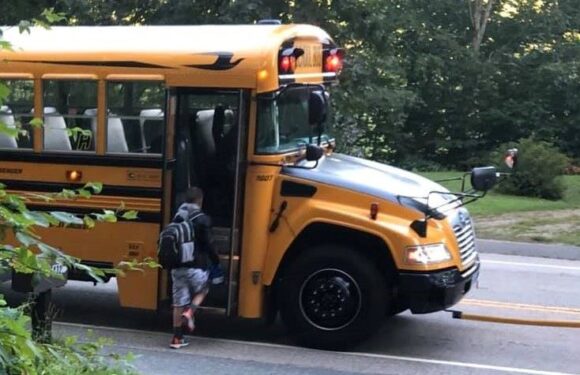
LYME-OLD LYME– The students of Lyme-Old Lyme Schools will commence the 2021-22 academic year tomorrow, Aug. 26, with masks still mandated by the Governor’s executive orders.

In almost all other respects, however, and quoting from a recent email sent by Superintendent Ian Neviaser to the school community, the school experience will be, “… far closer to a normal school year than last year as we return to our cafeterias for lunch, our buses for transportation, and participate fully in after school activities and athletics.”
Neviaser emphasized though, “All students, staff, and visitors, no matter their vaccination status, will be required to wear masks inside school buildings and on school buses. Masks are not required outdoors.”
He noted, however, “If there is no change to the aforementioned executive orders, on September 30, 2021, we will revisit our indoor mask requirement and make any adjustments based on public health measures at that time.”
Adding, “Some of our more effective mitigation strategies will remain in place including, but not limited to, encouraging students and staff to remain home when they are sick, physical distancing where feasible, quarantining of confirmed cases, mask breaks, and increased ventilation,” Neviaser noted, “This school year remote learning will no longer be an option for students.”
Regarding quarantine, Neviaser said, “Fully vaccinated students and staff who remain asymptomatic are no longer required to quarantine. For those who are not vaccinated, or are unable to receive a vaccine, we will continue to follow contact tracing protocols and quarantine guidelines from the Connecticut State Department of Education.”
On the topic of sports, Neviaser reported that, “The CIAC plans to offer all sports with the possibility of required masking in both indoor sports and those that are considered “high-intensity” (enhanced respiration) activities (e.g., football, ice hockey, etc.), adding, “We expect to get more clarity on these possible requirements in the near future.”
The Superintendent stressed that flexibility continues to be the key to success, commenting that Lyme-Old Lyme Schools, “will continue, as we have for the last eighteen months, to adapt to new information and adjust accordingly.”
He concluded on a positive note saying, “We appreciate your support in working toward the goal of providing our students the best in-person learning opportunity possible.”
The following is from a February 10, 2021JAMA article: “Prior to the coronavirus disease 2019 (COVID-19) pandemic, the efficacy of community mask wearing to reduce the spread of respiratory infections was controversial because there were no solid relevant data to support their use.
During the pandemic, the scientific evidence has increased. Compelling data now demonstrate that community mask wearing is an effective nonpharmacologic intervention to reduce the spread of this infection, especially as source control to prevent spread from infected persons, but also as protection to reduce wearers’ exposure to infection.
COVID-19 spreads primarily through respiratory droplets exhaled when infected people breathe, talk, cough, sneeze, or sing. Most of these droplets are smaller than 10 μm in diameter, often referred to as aerosols. The amount of small droplets and particles increases with the rate and force of airflow during exhalation (eg, shouting, vigorous exercise).”
Exposure is greater the closer a person is to the source of exhalations. Larger droplets fall out of the air rapidly, but small droplets and the dried particles formed from them (ie, droplet nuclei) can remain suspended in the air. In circumstances with poor ventilation, typically indoor enclosed spaces where an infected person is present for an extended period, the concentrations of these small droplets and particles can build sufficiently to transmit infection.
Community mask wearing substantially reduces transmission of severe acute respiratory syndrome coronavirus 2 (SARS-CoV-2) in 2 ways.
First, masks prevent infected persons from exposing others to SARS-CoV-2 by blocking exhalation of virus-containing droplets into the air (termed source control). This aspect of mask wearing is especially important because it is estimated that at least 50% or more of transmissions are from persons who never develop symptoms or those who are in the pre-symptomatic phase of COVID-19 illness.
Second, masks protect uninfected wearers. Masks form a barrier to large respiratory droplets that could land on exposed mucous membranes of the eye, nose, and mouth. Masks can also partially filter out small droplets and particles from inhaled air.